EMERGENCY FISH OPERATION: Venting A Swim Bladder
Editor’s Note: In the saltwater aquarium hobby, there are many challenges ranging from day to day tasks of maintaining a stable ecosystem to the more difficult issues that can arise due to disease or other problems in the reef. However, some of the rarest issues are those which require something like what you will be reading about below. Few of us have had the situation arise in which we have to do anything like operating surgically on a fish, and this task isn’t for the faint of heart. Rich Shashaty shares his experience of successfully saving his black cap basslet by venting its swim bladder.
by Rich Shashaty
I purchased a black cap basslet, and when I first got him he was very scared and didn’t show himself for almost 4 days. On the 4th day he finally started to eat. However, I noticed his belly looked bloated. I wasn’t sure what might be wrong, so I posted some photos on REEF2REEF and Humblefish (one of the experts in the Fish Disease Diagnosis and Treatment forum) was able to diagnosis him with improper decompression (since this is a new fish that is a known deep water species) and thus, gas being trapped inside the fish’s swim bladder. This can be caused if a fish isn’t properly decompressed by the collector.
So, I decided to look into venting the swim bladder with the help from Humblefish who directed me to some literature that I studied as best I could. On the day of the procedure, when I had the fish in a glass container right before it went onto the table, it actually floated to the top of the water column and was sticking out of the water—that’s how bad the swim bladder was.
The first picture (below) is how the fish was the entire 2 weeks I had it prior to venting. It would wedge itself in between the PVC to keep from floating to the top.
The second picture (above) is the fish 3 days after the procedure. At this point, I was not in the clear yet as a bacterial infection could have occurred at any time.
Below is a video of the procedure. I wanted to share this with everyone as there isn’t much information and How To’s on venting swim bladders for such small fish. Hopefully this will help somebody one day. (The video was accidentally paused at one point so please excuse the cut in the video.)
Tools Required:
- Surgical gloves
- Rubbing alcohol
- Iodine
- Q-Tips
- Clear platform with bright light for under the platform
- 30 gauge insulin syringe
- Understanding of swim bladder location and organ locations
- Clean QT tank
- General antibiotic for healing/prevention of infection. I used Maracyn Two.
Step 1: Have all the items out and ready to go. That way the fish out of the water for least amount of time.
Step 2: Place the fish on the clear platform, laying the fish on its right side. (It’s a good idea to have some aquarium water on the platform already.)
Step 3: Identify the swim bladder, it will be easy to see as it will be behind the pectoral fin. (I made sure to study the anatomy of fish, so I knew what I was looking for and looking at.) Once the swim bladder is identified, lightly place some rubbing alcohol on the area to be pierced using a Q-tip.
Step 4: Take your syringe and insert it at an angle towards the front of the fish, inserting in the middle of the swim bladder. You will feel resistance at first as the needle breaks through the skin, then it will slide right in. It’s best to hold the syringe near the bottom to have better control. Be careful not to go through the other side or hit organs. You do not need to insert far, just under the skin. Slowly pull back on the plunger to suck out the gases. Be sure to know what your fish is supposed to look like normally. If you suck out too much air the fish with not have any buoyancy and will have a hard time staying afloat. (I looked at hundreds of videos and pictures of healthy black caps.
I used a 30 gauge insulin syringe (I believe the smaller the needle the better). Some do not list what kind of gauge to use but let’s think about this for a moment. Humans use these for insulin, HGH, HCG, etc., and we are going to stick a very small fish with it… I think we’d best use the smallest syringe. If you break it down to scale, a 30 gauge syringe is similar in size of some pores on humans, and to the fish I performed this on, it’s similar in size to the fish’s pupil. How would you feel if you were to get stuck with a needle the size of your pupil? The smaller the gauge the quicker the wound will heal.)
Step 5: Pull the syringe out and place far away from you. (Always be carefully when working with needles.)
Step 6: Place iodine on the injection site with a NEW Q-tip.
Step 7: Place the fish back into its QT tank, and leave the lights off for 1-2 days. (Be sure that there is fresh clean water in the tank, no other fish, and all equipment is clean. This will reduce stress and chance of infection.)
The fish might look like it is dead, and that is normal. The first night was the worst as I’d keep checking for movement on his gills.
Step 8: On day 2, I started meds. Meds can be good and bad. They will help prevent infection but also can suppress the fish’s appetite.
The fish might not eat at all for a couple of days, and this is normal. Feed twice a day but feed lightly. Be sure to squirt the food near the fish so it doesn’t have to move too far for food.
3 days or so after starting the meds, if the fish is not eating, remove some of the meds from the water using water changes.
You should be performing water changes every 3 days. I had a 15 gallon QT and replaced 5 gallons every 3 days.
Continue with the care for at least 3-4 weeks. You want to observe the wound to make sure it is healing and there is no sign of infection. It might have a white/pale-ish look a couple days after the procedure, and that is normal (caused mostly from the rubbing alcohol). My black cap started to come around on day 8.
After 3-4 weeks if all looks good and you fattened him/her up, then they are ready for the DT! We take these living things from their natural habitat, for our own enjoyment. The least we can do is provide them with the best care possible.
After the procedure, I monitored his progress, and here are the updates as I saw them:
Day 3 (after procedure) Update:
Today’s update is unfortunately not great. The fish hasn’t eaten anything today, he just opens his jaws and swims towards my feeding tool. Tomorrow I will try some live brine even though he has eaten the frozen brine. I can’t have come this far and fail now.
Day 4 Update:
Finally he ate a couple of brine shrimp today. His breathing is normal but not too active today. He has 2 more days on the meds. Then I will do a 1/3 water change. The side of his body where the syringe was placed is whiteish. Could be from the rubbing alcohol. He began to display aggressive/warning behavior toward the feeding tool (opening his mouth wide and swimming up towards the feeding tool then swimming back down). All reported that this was a good sign.
Day 5 Update:
He is still not eating much. The whitish patch on his side where he was punctured is fading away so I’m assuming it is healing. He is still very shy and swims around only when I’m far away from the tank. I think he thinks to himself, “If I hide when that guy is around, then I won’t get poked with thing that really hurts!” LOL.
Day 6 Update:
Not much of a change still not eating much. I did a water change today along with adding carbon to remove the meds.
Day 7 Update:
I tried feeding him again not expecting much. To my surprise I caught the little guy swimming around chasing the brine! I have never seen him do that before. He usually will only eat a piece or two if I squirt it near him. This is great news! I am going to feed him now until he stops eating hoping I can fill his belly up. I think the water change and carbon helped a lot as the meds might have been affecting him.
Day 9 Update:
Here is a video of him eating:
Day 12 Update:
The little guy is still doing good.
Day 14 Update:
I was able to video him closer. He is still doing good from what I can see. I feed him twice a day (morning and night). He is currently eating brine shrimp only. I have tried worms and a meaty mix. Another week to week and a half in QT I think will be sufficient.
Day 16 Update:
While doing a water change I caught the little guy exploring, so I went into sniper mode and slowly crawled up to the tank and was able to capture this footage.
Day 23 Update:
Performing the last water change! In 3 days I am 99.9% sure the little guy will be going into the display tank! I’m very excited, but at the same time worried and hope he does well in there. I have been trying so hard to get a good picture of him but he won’t even let me record him eating anymore. Only comes out when I’m not around the tank…strange. He is still eating very well. The past week when the lights are out I see him going in and out of all the PVC exploring.
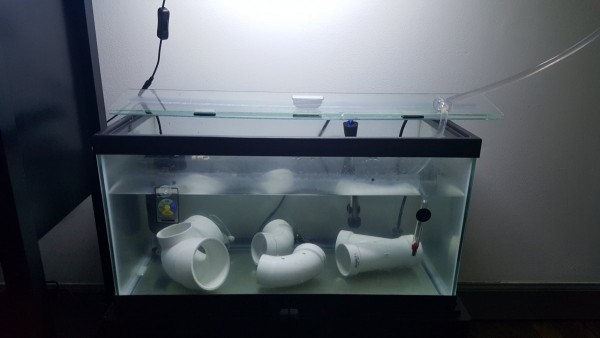
Day 25 Update:
The Final Day! Little guy goes into the display.
One last follow up, he is still doing great. A few days after going into the DT he had some kind of white growth on his left gill on the inside. I thought it might have been lympho, but it was very thin and smooth looking. It has since gone away. He is settling in, and after trying to steal the flasher wrasses den and getting kicked out at night when the flasher goes to sleep, I caught the little guy digging his own den today.
I shared this whole process with one of my LFS (actually the one that has given me some of the worst advice) and helped them out with an anthias that they had for about 3 months with a swim bladder problem last week.
Here is the last update video:
Author
Rich Shashaty has been in the marine aquarium hobby for a mere 7 months. He has a strong passion for all animals and finally decided to take the plunge into saltwater aquariums. Rich makes sure to take every step possible to ensure the proper health and care for his fish and corals. He plans to continue this hobby for many years to come.

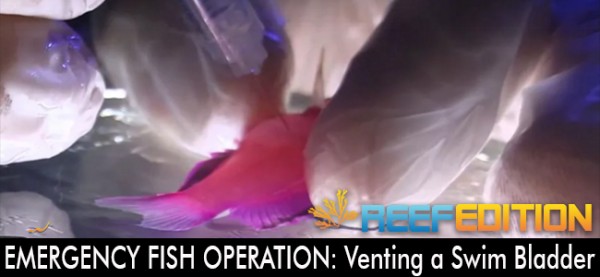
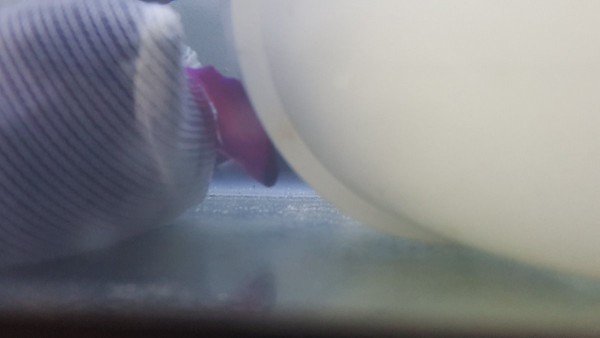
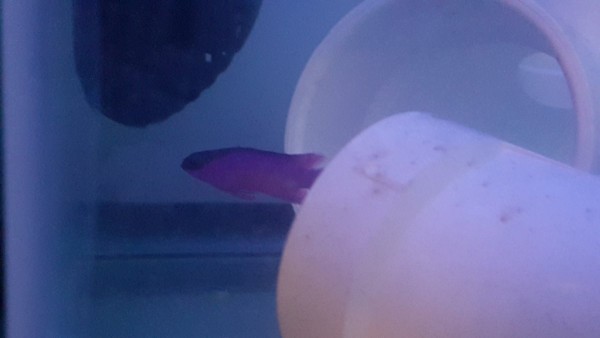
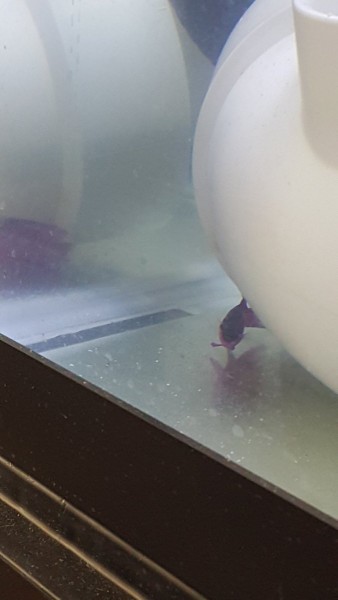
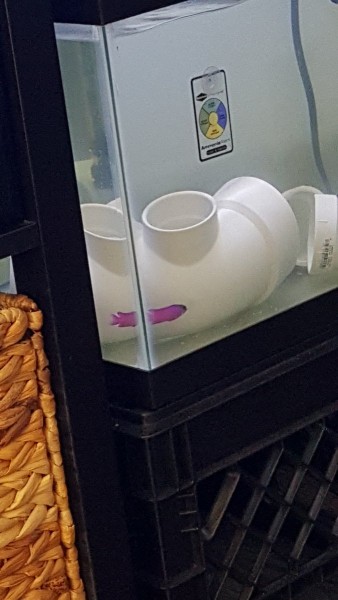
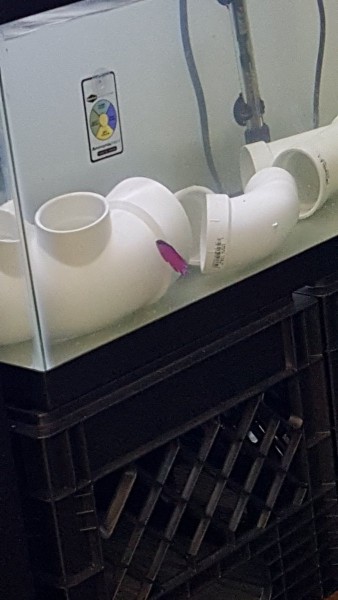
Leave a Reply
You must be logged in to post a comment.